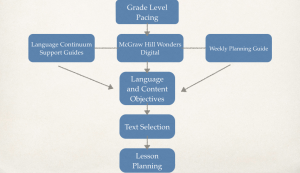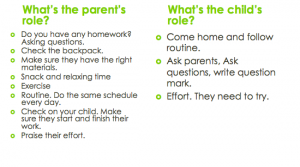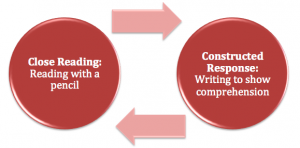Students learning English as an additional language need supports in all of their academic courses. According to Lydia Breiseth (2013), “Many students, including English language learners (ELLs), have difficulty mastering the kinds of academic language needed to succeed in school, especially if they have never been explicitly taught how to use it.”
Academic language is the language of school. Although learning both social and academic language are demanding, students need to have academic language to be successful in school. Students may be at different levels of English language proficiency and the following descriptions may help teachers as they work with English learners.
Beginning stage
ELLs at the beginning stage demonstrate comprehension of simplified language, speak a few English words, answer simple questions, and use common social greetings and repetitive phrases. They make regular mistakes.
Intermediate stage
ELLs at the intermediate stage speak using standard grammar and pronunciation, but some rules are still missing. Their level of comprehension is high and they can ask or answer instructional questions. They can actively participate in conversations, retell stories, and use expanded vocabulary and paraphrasing.
Advanced stage
ELLs at the advanced stage use consistent standard English vocabulary, grammar, idioms, and oral/written strategies similar to those of English-speaking peers. They have good pronunciation and intonation. Advanced ELLs initiate social conversations. They use idiomatic expressions and appropriate ways of speaking according to their audience.
There are also language structures checklists that ELL teachers in LPS use to measure students’ progress in the grammatical structures in their English language development.
In addition to grammatical structures and content vocabulary, academic language also refers to the words and phrases that connect ideas and communicate concepts. Dr. Cindy Lundgren (2013) explains the idea that students need key words but they also need the language such as signal words and phrases that connect them.
Teachers can support their ELL students by being aware of the academic language they need and by providing language objectives as well as content objectives. For more information about language objectives, click here. According to Breiseth (2013), “The most important thing you can do is to provide examples and model the kinds of language you expect students to use on a regular basis. By doing so, you will help familiarize students with the kinds of academic language needed to succeed in your classroom, as well as the purpose of the language they are using.”
What Is the Difference Between Social and Academic English? Colorín Colorado (2007). Retrieved from http://www.colorincolorado.org/educators/background/academic/
Academic Language and ELLs: What Teachers Need to Know, Lydia Breiseth (2013). Retrieved from http://www.colorincolorado.org/article/60055/





 This session discussed the strategy of Close Reading, composing Text Dependent Questions from that close reading experience and formulating Constructed Responses to demonstrate comprehension through writing. We also shared Tools for Readers Who Struggle and reviewed some of the supports available in that collection.
This session discussed the strategy of Close Reading, composing Text Dependent Questions from that close reading experience and formulating Constructed Responses to demonstrate comprehension through writing. We also shared Tools for Readers Who Struggle and reviewed some of the supports available in that collection.